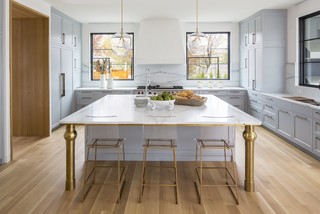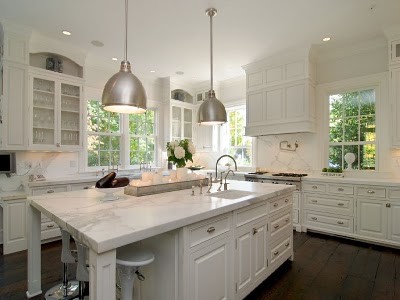Make Your Kitchen Island Attract Attention with Customized Legs For Kitchen Island
Make Your Kitchen Island Attract Attention with Customized Legs For Kitchen Island
Blog Article
Necessary Aspects to Think About When Choosing Legs For Kitchen Island
Choosing the appropriate legs for a cooking area island involves a cautious assessment of several factors that can considerably influence both capability and aesthetic charm. As we explore these aspects, it comes to be clear that each decision can have significant effects for the general cooking area experience.
Product Options
When choosing legs for a cooking area island, understanding the different product alternatives is vital for attaining both visual appeal and structural stability (Legs For Kitchen Island). The selection of material dramatically affects not just the resilience of the island however additionally its total design and performance
Timber is a preferred choice, providing warmth and adaptability. Strong woods, such as oak or maple, give stamina and can be discolored or repainted to match the kitchen decor. Steel legs, typically made from stainless-steel or functioned iron, add a modern and industrial feel while making certain resilience and security. These products are immune to put on and can sustain significant weight, making them suitable for bigger islands.
Another alternative is engineered products, like MDF or plywood, which can be extra affordable while still supplying a variety of finishes. Nevertheless, they might not offer the exact same degree of stability as strong wood or steel. Last but not least, products such as acrylic or glass can create a contemporary look, though they might need added support to ensure stability.
Ultimately, the selection of material for kitchen area island legs ought to align with the desired performance and the overall motif of the cooking area.
Design And Style

When thinking about design, the form and coating of the legs are vital. Conical legs can provide a sense of lightness and beauty, while thicker, much more durable legs can convey toughness and stability. Furthermore, the surface-- be it painted, discolored, or natural-- ought to match the cabinets and counter top materials to create a unified look.
Moreover, the design of the legs can additionally mirror individual taste. Customized or ornamental legs, such as those featuring intricate makings or one-of-a-kind geometric forms, can serve as focal points, adding personality and character to the kitchen area. Ultimately, the right selection will certainly not only enhance capability yet likewise elevate the aesthetic allure, making the cooking area island a standout function of the home.
Elevation Considerations
Choosing the appropriate height for cooking area island legs is critical, as it directly affects both functionality and convenience. The basic elevation for a cooking area island usually varies from 36 to 42 inches, lining up with usual countertop elevations.

It is additionally crucial to represent individuals' choices and heights. Tailoring the elevation can ensure a comfy experience for all member of the family, making the kitchen area island a more delightful and practical room.
Weight Assistance
Making sure adequate weight assistance for cooking area island legs is essential for both security and functionality. The cooking area island commonly serves numerous purposes, consisting of food preparation, eating, go now and additional storage space, necessitating a durable assistance structure. When picking legs, it is important to take into consideration the general weight ability required based upon the island's intended use and the products that will be positioned on it.
The selection of material for the legs plays a substantial role in their weight-bearing abilities. Strong wood, metal, and sturdy compounds typically give superior stamina contrasted to lighter materials. Furthermore, the style of the legs-- whether they are right, tapered, or have a pedestal form-- can influence their capacity to disperse weight efficiently across the framework.
Moreover, the leg placement ought to be purposefully intended to enhance stability. Legs positioned at the edges or with a bigger base can much better support heavier tons. Always get in touch with the producer's specs pertaining to lots limits to ensure that the legs can sustain the designated weight without endangering safety. In summary, picking kitchen area island legs with ample weight assistance is essential for producing a useful and secure cooking space.
Installment and Upkeep
Appropriate setup and maintenance of cooking area island legs are essential for making certain durability and stability. To begin, it is important to adhere to the maker's guidelines throughout setup. This typically involves safeguarding the legs to the island base making use of suitable bolts, guaranteeing that the legs are level and aligned. Making use of a degree tool can aid avoid tottering and enhance the general visual allure of the cooking area island.
Once set up, regular maintenance is essential to protect the honesty and appearance of the legs - Legs For Kitchen Island. For wood legs, periodic cleaning with a wet cloth and application of appropriate timber polish can protect against moisture damage and preserve their coating. Steel legs may need a mild cleaning option to get rid of grease and gunk, adhered to by a dry fabric to avoid rust development
Additionally, examine the legs regularly for signs of wear or damage, click over here now such as fractures or loosened joints. Tightening up screws or screws as required can additionally lengthen the life-span of the legs. By adhering to these installation and maintenance practices, property owners can make sure that their kitchen area island stays strong and aesthetically appealing for several years ahead.
Verdict

Visual comprehensibility is paramount in choosing the style and style of legs for a cooking area island, click resources as these elements significantly affect the total setting of the room. Tapered legs can offer a sense of lightness and sophistication, while thicker, extra durable legs can convey strength and stability.Choosing the suitable elevation for kitchen area island legs is critical, as it directly impacts both functionality and comfort. In summary, selecting kitchen island legs with sufficient weight support is vital for producing a useful and risk-free cooking area.
In final thought, choosing legs for a kitchen area island requires careful consideration of various factors, including product alternatives, design, height, weight support, and installation.
Report this page